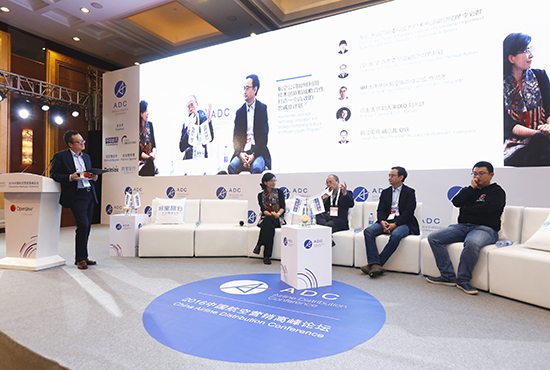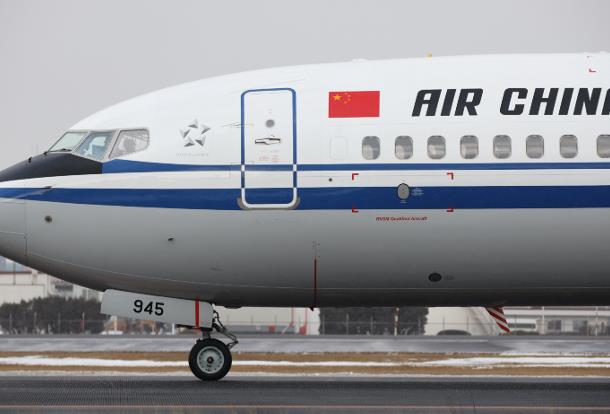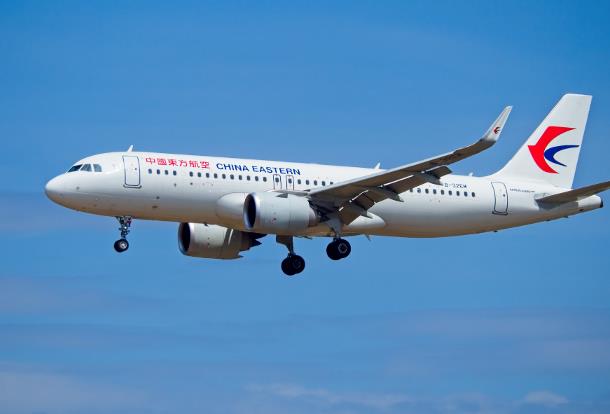ChinaTravelNews, Nicole Sy - Even at the last panel for TravelDaily’s 2016 Airline Distribution Conference, the ballroom at the Hilton Doubletree Hotel was packed. For many in the audience, it would be an interesting discussion, as they could put themselves in the unique perspective as both the suppliers and consumers. The topic at hand: How can airlines use technology innovation and strategic cooperation to build an efficient loyalty program?
On the panel are Biqun Li, Vice General Manager, Customer Relationship Department, Marketing and Sales Committee of China Eastern Airlines; Jack Hao, Vice Director, Commercial Committee of Sichuan Airlines; Allen Cai, Air and Travel Industry Leader, Greater China at IBM; and Troy Liu, the Founder & CEO of Mileslife.
Moderated by Joseph Xia, the Vice President of Jin Jiang International E-Commerce, the panel kicked off the conversation first from the airlines’ introduction of their own loyalty programs.

For China Eastern, their Dongfang Mileage Club system had 26 million members as of 2015, of those, yearly repeat customers constituted more than 30%. They grow about 5% annually, but Vice General Manager Li sees a need for better technology infrastructure to catch up to that of their foreign peers. “We are struggling to collect the right information, and we need to set up the right system to better serve our passengers. Yet we need to also have human touch,” she says.
Meanwhile, Jack Hao of regional airline, Sichuan Airlines says domestic factors are playing a big role now. Because of their target market, Sichuan Airlines is feeling the hit of the government’s anti-corruption drive. “This year, maybe the growth is not as big as in the past. There’s stagnation since we look to business travelers and government players,” he says. “Previously, government officials would fly all the time at no expense, but now because of the central government’s anti-corruption activities, government players are affected.”
Another challenge for Sichuan Airlines is consolidating the relationship with the younger generation of business travelers, according to Hao. “Younger people have different set of preferences, that’s why we need to think about different things,” he says. “Mileage and loyalty is just the tip of the iceberg. We need to have the best product offering, integrate other products and commoditize the product so if demand goes up, price also goes up.”
All panelists discussed the "twenty-eighty rule" which means 20% of members contribute 80% of revenue. This rule is particularly important on a highly competitive, price-transparent internet platform, where the issue is how to create an efficient loyalty program, while enhancing profitability.
“It’s safe to say that it is a highly segmented market now and the value chain has evolved. The whole ecosystem has become networked instead of linear,” says Allen Cai from IBM, the first creators of the loyalty system, according to him. “When it comes to the management of loyalty points for travelers, it’s a means to an ends. We have to go back to the most fundamental thing: who are you, who are we? It’s a challenging area for airlines. Individuality should be treated individually. If you look at C-end customer power, they are too fickle,” he says. “Today they work with you, but tomorrow they will switch brands.”
Former internet celebrity, now Founder of Mileslife, Troy Liu is the very example of a frequent flyer member that subscribes to loyalty programs. “The 20% of customers are the ones you need to focus on because they are the valuable ones,” he says.
Hao doesn’t completely agree. “But the 20% are already the peak, so we need to look around to reach the other 80%,” he says. “We need to look at internet consumption behavior data to determine which is the best way to go.”
Li from China Eastern enters the middle ground and agrees with the two very different perspectives. “Yes, we pay attention to 20%, but we do not want to give up on the 80%, and have to keep them in the consumption circle,” she explains. “We always want to think what's the value of these loyalty points? Overseas, they use loyalty points for other ways not just flights and keep it moving in circulation because more circulation will beget better consumers.”
Cai weighs in, “bringing more potential passengers will have more incremental growth,” he says. “But for those who fly frequently like business travelers, you cannot entice them to fly too much more because it’s based on their needs.” For this, he points out, the industry needs to have specific technologies to be able to track, much like what Alitrip recently unveiled with their Super ID feature.
Liu points out an important point from the consumer perspective. “Low frequent behavior needs to be combined with high frequent behavior. If you only fly twice every year, you may only think about air companies once to twice yearly. But if you have a credit card that will earn points, you will think of them every time you buy coffee,” he says.
Another big issue with abuzz in the Frequent Flyer circles are the monetization of mileage and points. With many airlines switching from rewarding points based on distance, they are now rewarding based on spending.
“For airline companies’ premium passengers, transferring mileage to currency, we have to determine whether it depreciates or not,” says Sichuan Airlines’ Hao. “For example, if you use mileage to exchange for air tickets or cards for petrol that’s ok, if we are able to transfer it to different things, it will mean multiple access. If you limit this type of usage its not very good. For premium passengers, the question is how do we create value for them?”
For some people it’s necessary to be able to use points for things other than flights, according to Liu. “I’m not saying have to transfer it into a currency, but you need to have a balance. There’s not just one solution like changing it to currency,” he says.
“With loyalty points, it is not that we want to extract value in the short term. We want to make a connection with passengers in the long term,” says Li. “We’re working with a lot of the partners in letting people notice our brand. Actually its a good way to transfer your culture to them.”
She cites Delta Airlines as an example. “For Delta they seldom have discounts and promotions. Delta’s concept is different; they’re more like a brand. They have more experience with transferring their brand culture and brand image, and want to integrate with people’s daily lifestyles,” she says. “When thinking of loyalty points, you shouldn’t think of extracting profits. Airlines should focus on the long-term not the short term.”
When it comes to the future of Loyalty Programs in China, Liu believes airlines will build more partnerships with non-aviation companies. Cai meanwhile, hopes it will all come back to the consumer. “My hope or expectation is that the airline companies will be able to break through obstacles of Frequent Flyer Programs,” he says. “Also, I hope the air company shouldn’t just use their loyalty programs just for their members. They should provide better services and be more consumer-centric.”
Li agrees. “Consumers are more important. In the future, we want to improve our technology not just for the loyalty program, but for all consumers and passengers flying with us.”




